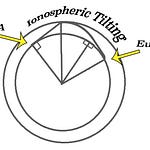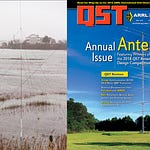This clip is cited in the KENWOOD SPEECH PROCESSOR article.
In this clip we hear the finalized & “tweaked” speech processor audio from a TS-830S through the Monitor Audio Output port. So this is the audio heard by the operator on transmit. This is after the TS-830S had been fully re-capped with its ALC and RF Speech Processor re-aligned to the “line level” audio injected from the external processor after the first stage of the rig’s microphone amplifier. Superimposed over the externally processed audio is the TS-830s RF speech processor, which is toggled on and off at the end of the clip.
NOTES:
One of the fantastic features of the little $12 chip is heard during one of the infrequent lulls of the blabbering operator’s speech. Once in a while, when he does not talk, everything is immediately silent. There is no “tail” of background sound or room ambience before the noise gate mutes the microphone. That lack of tail—that immediacy of silence—is the downward expander. It’s happening in between syllables during active speech, too boot. A downward expander attenuates weak signals with a fast attack while doing nothing to louder signals. So its constantly ebbing away at the extremely low-level background artifacts in the processed audio which are well lower in amplitude that the operator’s voice. Fascinating. Again, this is why there is no “tail” of room tone after the operator stops saying something and before the noise gate mutes the audio.
Kenwood’s TS-830s RF speech processing is laid ever so lightly on the externally processed audio. In fact, the compression meter deflection is about 1/5 of what is called for in the operator’s manual. When advanced to the Kenwood spec “1/3 deflection”, the audio is not distorted, but is over-powered, dominated, by the internal RF speech processing artifact.










